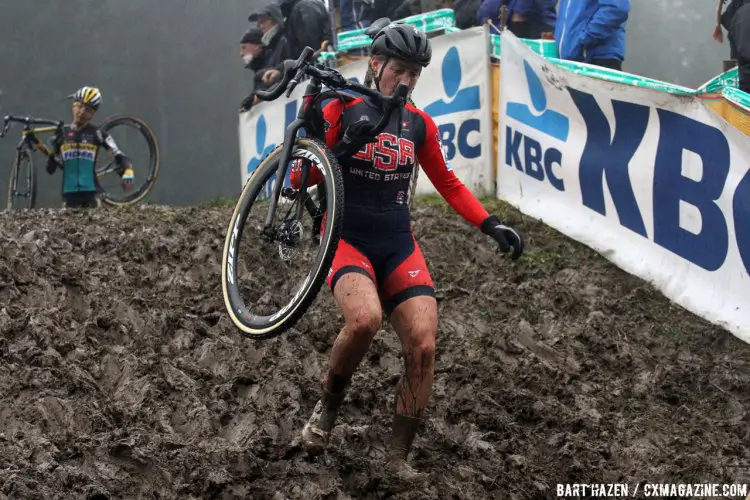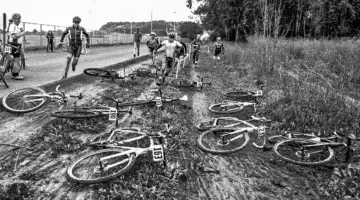Knock It Off, Early
Once you’re home, get to the hose ASAP. This step is laborious but it’s going to save you a lot of trouble in the end. Hose off the bikes. They don’t have to be perfect, but knock off as much mud as you can, using water pressure or a hose-connected brush. Please don’t do this at the races. People racing or getting ready to race should take priority at the hose/washers on site.
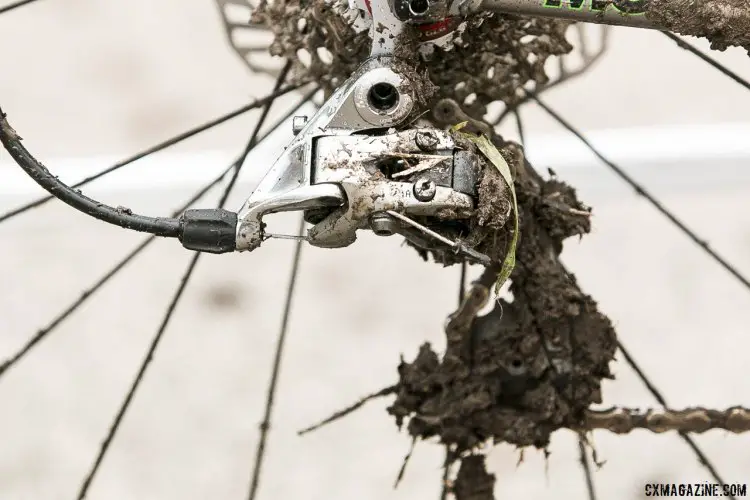
Don’t wait for the mud to dry before cleaning your bike. photo: This SRAM Red rear derailleur got plenty of mud action in the Junior Race at the 2015 Nationals. © Cyclocross Magazine
The next step is to unbag all your clothes and hose them off. They don’t have to be perfect, but removing what you can will make things a lot easier come wash cycle. Then hose yourself down, especially if you’re staying at someone else’s house. The main step here in all three cases is knocking the big stuff off outside. And then hose it all out of the driveway.
If you don’t have easy access to a hose at your housing, look for a do-it-yourself car wash. Do not spray any part of your body with the hose, but you can rinse out clothing just fine. You can get the rims and frame of your bike as well, but avoid spraying into any bearings. I know the pros do this, but they also get a lot of free parts, and usually have a mechanic to hand the bike off to.
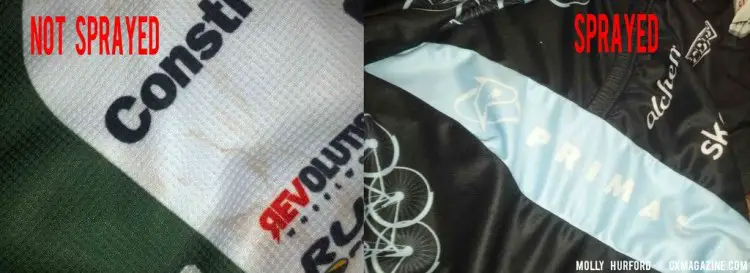
Pre-spraying muddy clothes is a smart move. Otherwise, your whites may not end up quite as bright. © Cyclocross Magazine
Once inside, get the laundry going. I’m a big fan of Tide and Oxy Clean. Both those things will get your clothes clean. Throw it all in, maybe with a pre-soak cycle. Do not dry them! Among other things that will set stains in. If you’re racing two days the main point is just to get your clothes presentable again. Also be aware you may need to run a clean cycle on the washer when you get done, especially if the washer is not yours. [Ed. note: See our Laundry Wars shootout of cleaning products and techniques in Issue 23, also available digitally here.]
Get yourself into the shower, both to get warm and to get clean. Then get fed. Once that’s settled, go over your bike and pick the mud from the cassette, pedals and wherever else it might be. You’ll want to lube the chain in the morning but for right now just let the water evaporate.
Last step, stuff your shoes with newspaper or paper towels. Newspapers are “free” but increasingly hard to find. Anyways, find something to stuff in them to absorb moisture. You’ll want to change this out before you go to bed too. Leave them near a vent and they should be dry-ish by morning. You can put them in a dryer if need be but it makes an awful racket, and do it for 20 minutes at most, on low heat. [Ed. note: Or you can purchase a portable shoe/glove dryer, like the DryGuy, reviewed here.]
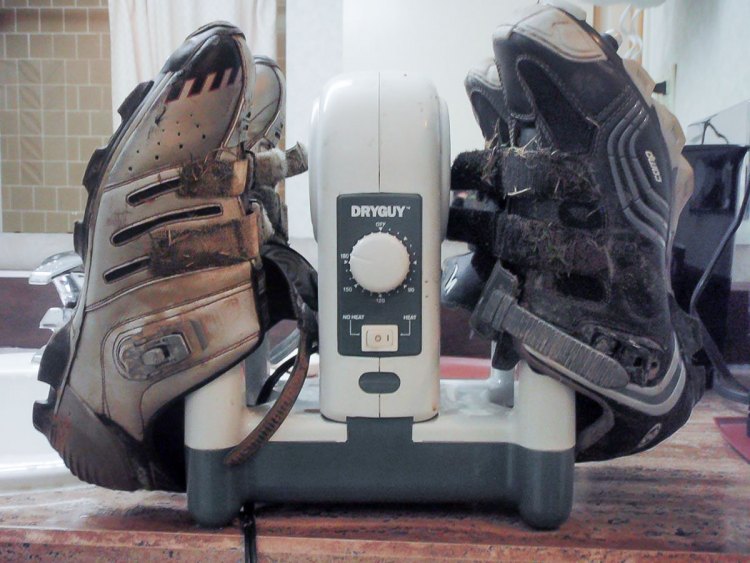
The DryGuy portable shoe dryer can give you dry shoes for a second day of racing, but newspaper can suffice.
The above is written assuming you’re out of town staying somewhere other than home and racing Saturday and Sunday. The main points are have a lot of clothes so you’re not stuck riding or racing in muddy clothes, then bag those clothes when you’re done to limit the mess, and get as much mud out of them as quickly as possible when home. It won’t be perfect, but save perfect for when you’re home and have more time and space to operate. The same goes for your equipment. Get your bike and wheels reasonably clean as quickly as you can and get them ready for the next day. You can polish them up and really clean the chain when you’re back at home.
Muddy races. They are a lot of fun and what we think of as real cyclocross. On the flip side, they’re a lot of work before and after the fact. Have a system in place to help you deal with the mud (bags, changing mat, travel with detergent). Have a plan to deal with the mud before the race (spare clothes) and after the race (a hose and laundry) and you’ll be able to make the most of what should be a fun day of racing.
’Cross Is Here. Have your best cyclocross season ever with all of our Training Tuesday pieces here from coaches Mayhew, Adam Myerson and Kenneth Lundgren and others. Can’t get enough? See our Cyclocross Academy and Cyclocross 101 articles here.
